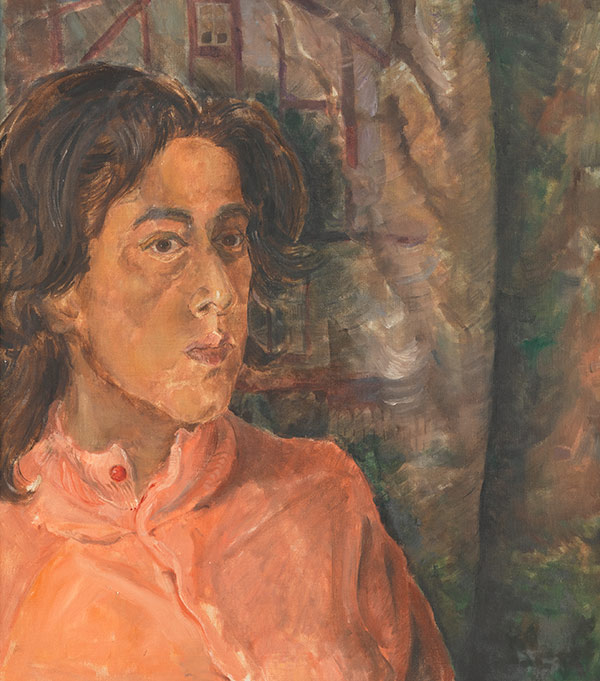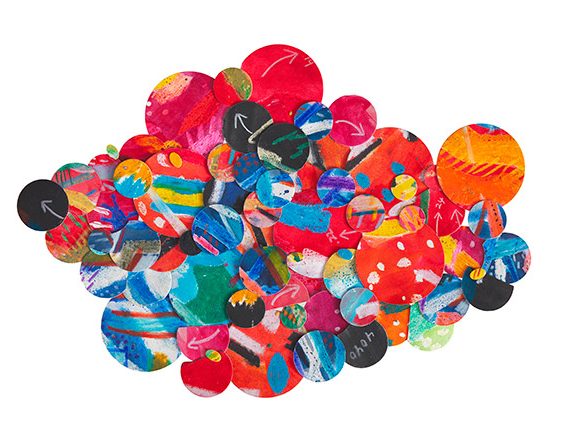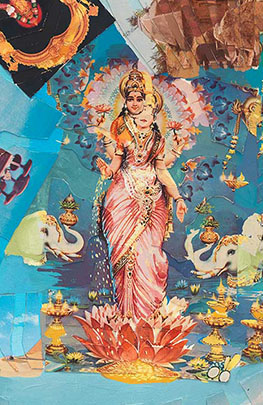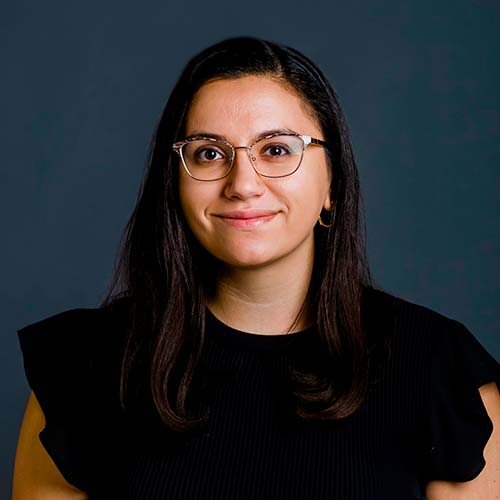What Remains to Be Seen
Artist of abstraction Howardena Pindell (’65) ponders identity and memory in a career-length retrospective

Video Drawings: Swimming (1975) Chromogenic print; framed: 14 x 16 1/8 in. Art by Howardena Pindell
What Remains to Be Seen
Artist of abstraction Howardena Pindell (’65) ponders identity and memory in a career-length retrospective
When Howardena Pindell recalls her BU days, her time spent in professor emeritus Conger Metcalf’s drawing class is especially vivid. “We were always drawing eggs,” she says.
All those eggs had a purpose, of course. “It helped us learn to control our use of value,” the lightness and darkness of a color. “BU had a really excellent program for learning figuration—I was trained as a figurative artist,” says Pindell (’65), a 1983 Distinguished Alumni Award winner who teaches in Stony Brook University’s department of art.
After BU, Pindell earned an MFA at Yale, which challenged her training in figuration. It was the late ’60s, a tumultuous time for the art world, when new and radical movements were gaining ground—abstraction, minimalism, pop art. Grad school exposed Pindell to all of them. “Some people frowned on anyone who was a figurative painter, and so I had kind of an inner struggle about my work,” she says.
Representational imagery wars with abstraction throughout her work, now on view at Brandeis University’s Rose Art Museum in a career-length retrospective, Howardena Pindell: What Remains To Be Seen. The chronological exhibition, which spans more than 50 years of Pindell’s career, premiered at the Museum of Contemporary Art Chicago.

In the exhibition’s 144 works—from a self-portrait she composed during her time at CFA (Self-Portrait, 1963–64) to more recent vibrant and abstract collages—Pindell pays homage to her experiences as a female artist of color.
In 1969, Pindell was the first African American woman to become a curator at the Museum of Modern Art in New York.
“Working in a major museum made a big difference in my own art,” she says. “I could go into the museum to study the work on the days when the public was not admitted, and in some cases if I needed to catalogue something I would have hands-on access to a work.”
At the museum, she became enthralled with the art of abstract painters Wassily Kandinsky and Larry Poons—whose pieces embrace geometric shapes and rely heavily on mark making—and with the more figurative, intensely colored pastels of Odilon Redon.
Their influence is especially evident in Pindell’s Video Drawings series, a hybrid of figuration and abstraction. She would affix drawings she made on acetate to an image playing on a television screen, and then photograph the composition. In Video Drawings: Abstract (1976) ambiguous figures in white robes that appear to be participating in a parade are disrupted by Pindell’s crisscrossing black arrows and red circles. The curve of the television set is visible at the top of the composition, imbuing it with more movement.

In Video Drawings: Swimming (1975), Pindell enlivens the frozen image of a blurred man diving into an illuminated pool with frenetic Kandinsky-like marks composed of random dots, arrows, and numbers.
A native of Philadelphia, Pa., Pindell grew up during segregation, and many of her works touch upon racism, inequality, and identity. She recalls a childhood visit to a root beer stand in Kentucky, where she and her father “were given these chilled mugs, and at the bottom of the mugs were giant red circles. I was stunned when I asked my father why that was, and I learned that it meant it was dishware reserved for black people. So, I like to say that I was scared by a circle,” she says.

The circle recurs in many of her pieces, including two abstract collages, Untitled #4D (2009) and Untitled #5B (Krakatoa) (2007). Both works comprise circles and ovals punched out of colorful drawings she’d created over several years (the hole punch is a prominent tool in her arsenal—she has them in a variety of sizes). The circles overlap to form a larger amorphous shape, which gives works like Untitled #5B (Krakatoa) a three-dimensional quality, with many circles standing on their edges, bursting out of the composition.

“To make them stand up, I used Jade glue. I’d prop the pieces up with Play-Doh, and then the glue would set and I’d remove the Play-Doh. It’s very secure and also archival,” Pindell says. The type of glue is made specifically for archival book and canvas repair. “I’m interested in archival materials since work can deteriorate—that’s something I got from my museum job, seeing how work deteriorates over time.”
A series of mixed-media works, including Autobiography: India (Lakshmi) (1984), are influenced by a car accident that left Pindell with short-term amnesia that affects her to this day. For these works, “I’d lie down on a canvas and trace my body, cut it out, trim it, and sew it back into the canvas,” she says.
The pieces, like memory, are visually fragmented, with torn imagery collaged on paper. Pindell has painted the spaces in between. “The presence of my body is very clearly in the works throughout this series—the feeling was, I could have died in the car accident, and I just wanted to express myself and my points of view.”
Howardena Pindell: What Remains To Be Seen was on view at Brandeis University’s Rose Art Museum from January 24 through June 16, 2019.
